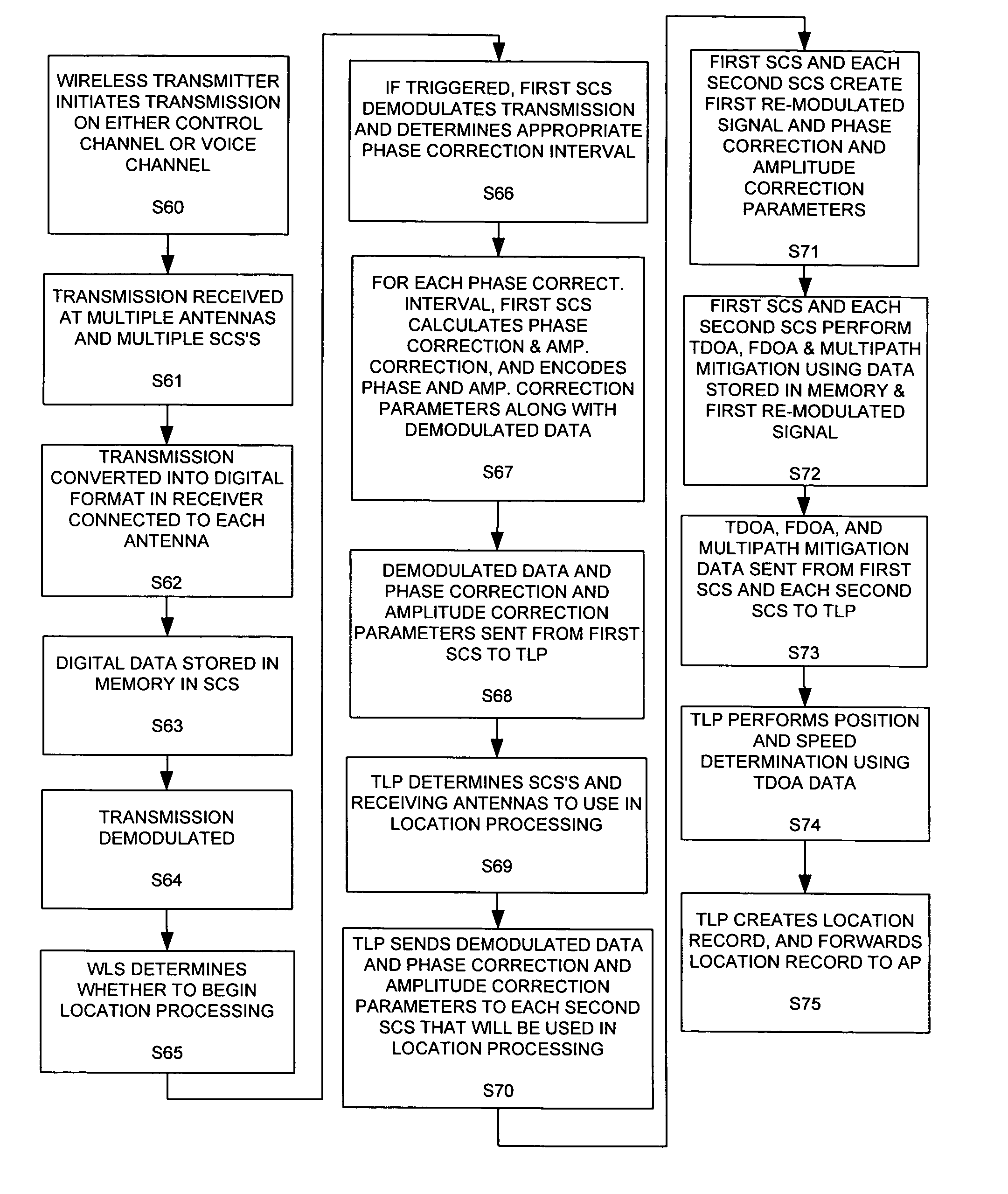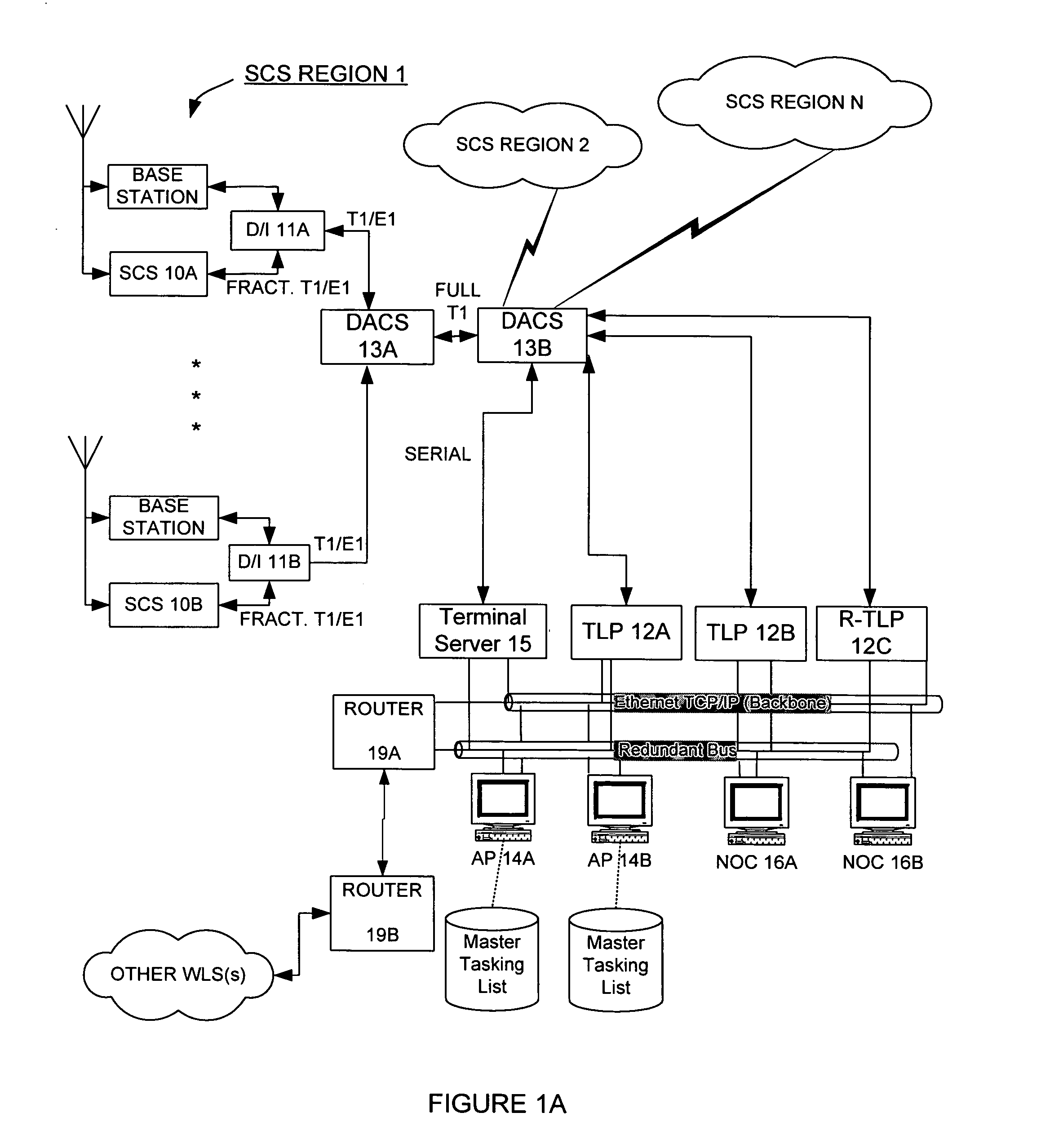Applications processor including a database system, for use in a wireless location system
a database system and application processor technology, applied in the field of methods and apparatus for locating wireless transmitters, can solve the problems of reducing the efficiency of wireless location and reducing the difficulty of most approaches to function properly in wireless location
- Summary
- Abstract
- Description
- Claims
- Application Information
AI Technical Summary
Benefits of technology
Problems solved by technology
Method used
Image
Examples
Embodiment Construction
[0084]The Wireless Location System (WLS) operates as a passive overlay to a wireless communications system, such as a cellular, PCS, or ESMR system, although the concepts are not limited to just those types of communications systems. Wireless communications systems are generally not suitable for locating wireless devices because the designs of the wireless transmitters and cell sites do not include the necessary functionality to achieve accurate location. Accurate location in this application is defined as accuracy of 100 to 400 feet RMS (root mean square). This is distinguished from the location accuracy that can be achieved by existing cell sites, which is generally limited to the radius of the cell site. In general, cell sites are not designed or programmed to cooperate between and among themselves to determine wireless transmitter location. Additionally, wireless transmitters such as cellular and PCS telephones are designed to be low cost and therefore generally do not have loca...
PUM
 Login to View More
Login to View More Abstract
Description
Claims
Application Information
 Login to View More
Login to View More - R&D
- Intellectual Property
- Life Sciences
- Materials
- Tech Scout
- Unparalleled Data Quality
- Higher Quality Content
- 60% Fewer Hallucinations
Browse by: Latest US Patents, China's latest patents, Technical Efficacy Thesaurus, Application Domain, Technology Topic, Popular Technical Reports.
© 2025 PatSnap. All rights reserved.Legal|Privacy policy|Modern Slavery Act Transparency Statement|Sitemap|About US| Contact US: help@patsnap.com



